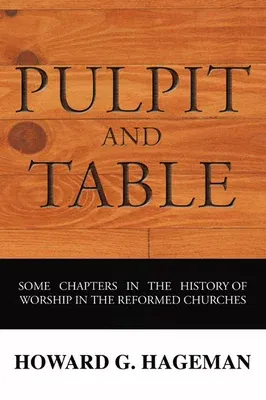Although liturgical tradition in Reformed churches is a frequently
probed subject, information in certain aspects of the field is limited.
To alleviate this situation, Dr. Hageman places major emphasis in this
book on some lesser known areas of Reformed worship. At the same time he
touches on highlights of Reformed liturgical history, particularly the
relative significance of sermon and sacrament. The importance of
Zurich's contribution to Reformed tradition is comparatively
unrecognized. As Dr. Hageman states, Know it or not, down to relatively
recent times the Reformed churches have, practically speaking,
acknowledged Zwingli as their liturgical master. This he attributes in
part to the fact that when Calvin came to Geneva five years after
Zwingli's death, he found the Zurich point of view too firmly entrenched
there to be materially changed. Additional territory unfolds with an
examination of the dark age of Reformed Protestantism - the period
between the closing of the Westminster Assembly of Divines and the
advent of Schleiermacher. An impartial observer surveying the liturgical
life of late eighteenth century Reformed churches could have justifiably
concluded that it was nearly finished. Pointing out that signs of
recovery were already visible, the author notes that these churches were
on the verge of a liturgical development that was to prove more
productive than any in their history. Dr. Hageman concludes with a
discussion of theories which should undergird and test any liturgical
developments in Reformed churches. A primary factor here is the
principle that pulpit and table are inseparable parts of a single whole.
He emphasizes, however, that if the Reformed churches really understand
their position, they have every reason for being liturgically fresh and
creative. Their liturgy must seek to establish models, not rigid
requirements. Concise yet comprehensive, this treatment of liturgical
history is valuable for pastors and students of church history.
Concerned laymen, including organists, choir directors, and choir
members, will find it a useful aid in understanding worship patterns of
Reformed churches.


